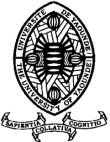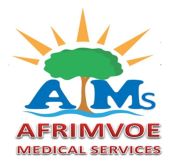Précision de l'Échographie Comparée à l'Histopathologie dans l'Évaluation Des Tumeurs des Glandes Salivaires à Yaoundé (Cameroun)
DOI :
https://doi.org/10.5281/hra.v2i3.5410Mots-clés :
échographie, histopathologie, tumeurs des glandes salivaires, CamerounRésumé
ABSTRACT
Context. Salivary gland tumors account for about 2.8 – 10% of all head and neck malignancies on the African continent. The scarcity of the equipment necessary for the specific diagnosis of these tumors has a direct impact on the management and outcome of patients, especially to specify the surgical indications. We aimed to assess the accuracy of ultrasound to determine the type of salivary gland tumors. Methods. This retrospective cross-sectional study was done by reviewing files registered in the imaging departments of two reference hospitals in Yaoundé, Cameroon from January 2017 to December 2021. Children and adults with salivary gland tumors were included, and sociodemographic, clinical, ultrasound and histopathological data were collected. Sensitivity, specificity, positive and negative predictive values were used to assess the accuracy. Results. A total of 51 participants were included in this study, with a mean age of 36.1 ± 20.2 years and 54.9% of female. Benign tumors were more common (56.9%), with pleomorphic adenoma (48.3%) and adenocarcinoma (36.3%) being the most frequent benign and malignant tumors respectively. The sensitivity and specificity of ultrasound were respectively 72.7% (95% CI: 49.8–89.2) and 96.6% (95% CI: 82.2–99.9). Conclusion. Ultrasound is a highly specific and moderately sensitive test for the diagnosis of salivary gland tumors. It could therefore be used to reassure patients who don't have cancer, but confirmation requires further tests.
RÉSUMÉ
Contexte. Les tumeurs des glandes salivaires représentent environ 2,8 à 10 % de tous les cancers de la tête et du cou sur le continent africain. La rareté de l'équipement nécessaire au diagnostic spécifique de ces tumeurs a un impact direct sur la prise en charge et le pronostic des patients, notamment pour préciser les indications chirurgicales. Nous avons cherché à évaluer la précision de l'échographie pour déterminer le type de tumeurs des glandes salivaires. Méthodes. Cette étude transversale rétrospective a été réalisée en examinant les dossiers enregistrés dans les services d'imagerie de deux hôpitaux de référence à Yaoundé, au Cameroun, de janvier 2017 à décembre 2021. Les enfants et les adultes présentant des tumeurs des glandes salivaires ont été inclus, et des données sociodémographiques, cliniques, échographiques et histopathologiques ont été recueillies. La sensibilité, la spécificité, les valeurs prédictives positives et négatives ont été utilisées pour évaluer la précision. Résultats. Au total, 51 participants ont été inclus dans cette étude, avec un âge moyen de 36,1 ± 20,2 ans et 54,9 % de femmes. Les tumeurs bénignes étaient plus fréquentes (56,9 %), avec l'adénome pléomorphe (48,3 %) et l'adénocarcinome (36,3 %) étant les tumeurs bénignes et malignes les plus fréquentes respectivement. La sensibilité et la spécificité de l'échographie étaient respectivement de 72,7 % (IC à 95 % : 49,8-89,2) et 96,6 % (IC à 95 % : 82,2-99,9). Conclusion. L'échographie est un test très spécifique et modérément sensible pour le diagnostic des tumeurs des glandes salivaires. Elle pourrait donc être utilisée pour rassurer les patients qui n'ont pas de cancer, mais la confirmation nécessite des tests supplémentaires.
Références
Liu Y, Li J, Tan Y ran, Xiong P, Zhong L ping. Accuracy of diagnosis of salivary gland tumors with the use of ultrasonography, computed tomography, and magnetic resonance imaging: a meta-analysis. Oral Surgery, Oral Medicine, Oral Pathology and Oral Radiology. févr 2015;119(2):238-245.e2.
Obimakinde OS, Olajuyin OA, Adegbiji WA, Omonisi AE, Ibidun CO. Clinico-Pathologic Study of Salivary Gland Disorders at a Sub-Urban Nigerian Tertiary Hospital: A 5 Year Retrospective Review. IJOHNS. 2019;08(03):106‑12.
Young A, Okuyemi OT. Malignant Salivary Gland Tumors. In: StatPearls [Internet]. Treasure Island (FL): StatPearls Publishing; 2023 [cité 16 nov 2023]. Disponible sur: http://www.ncbi.nlm.nih.gov/books/NBK563022/
Djomou F, Siafa AB, Nkouo YCA, Eko DM, Bouba DA, Ntep DBN, Nganwa G. Aspects Epidémiologiques, Cliniques et Histologiques des Cancers de la Sphère Orl. Etude Transversale Descriptive au Chu de Yaoundé de 2015 à 2020. Health Sciences and Disease. 3 août 2021;22(8).
Oti AA, Donkor P, Obiri-Yeboah S, Afriyie-Owusu O. Salivary Gland Tumors at Komfo Anokye Teaching Hospital, Ghana. SS. 2013;04(02):135‑9.
Abenwie SN, Essi MJ, Edo’o VD, Nemy JN, Ndom P. Role of health promotion in cancer control in Cameroon and its utilization by the National Cancer Control Program (NCCP), strategy from 2004 – 2019. IRJPEH. 8(1).
Maseer SK, Al-Aswad FD. Clinical and Sonographic Evaluation of Major Salivary Gland Tumors. Iranian Journal of War and Public Health. 10 avr 2023;15(2):107‑14.
Farasat M, Ovali GY, Duzgun F, Eskiizmir G, Tarhan S, Tan A. Sonoelastographic Features of Major Salivary Gland Tumors and Pathology Correlation. I J Radiol. 2018;15(1).
MINSANTE. 2020-2024 National Strategic Plan for Prevention and Cancer Control (NSPCaPC) [Internet]. Cameroon: MINSANTE; 2020 juin [cité 25 nov 2023] p. 22‑3. Disponible sur: https://www.iccp-portal.org/system/files/plans/FINAL%20COPY%20OF%20PSNPLCa%20ENGLISH.pdf
Sando Z, Fokouo JV, Mebada AO, Djomou F, NDjolo A, Oyono JLE. Epidemiological and histopathological patterns of salivary gland tumors in Cameroon. Pan Afr Med J. 2016;23:66.
World Medical Association Declaration of Helsinki: Ethical Principles for Medical Research Involving Human Subjects. JAMA. 27 nov 2013;310(20):2191.
Braimah R, Taiwo A, Ibikunle A, Sahabi S. Clinico-Pathologic Review of Salivary Glands Neoplasms in a Nigerian University Teaching Hospital: A Five Year Retrospective Survey. 4(2).
Alsanie I, Rajab S, Cottom H, Adegun O, Agarwal R, Jay A, Graham L, James J, Barrett AW, van Heerden W, de Vito M, Canesso A, Adisa AO, Akinshipo AWO, Ajayi OF, Nwoga MC, Okwuosa CU, Omitola OG, Orikpete EV, Soluk-Tekkesin M, Bello IO, Qannam A, Gonzalez W, Pérez-de-Oliveira ME, Santos-Silva AR, Vargas PA, Toh EW, Khurram SA. Distribution and Frequency of Salivary Gland Tumors: An International Multicenter Study. Head Neck Pathol. 27 mai 2022;16(4):1043‑54.
Kumaran JV, Daniel MJ, Krishnan M, Selvam S. Salivary gland tumors: An institutional experience. SRM Journal of Research in Dental Sciences. mars 2019;10(1):12.
Mimica X, McGill M, Hay A, Zanoni DK, Shah JP, Wong RJ, Ho AL, Cohen MA, Patel SG, Ganly I. Sex Disparities in Salivary Malignancies: Does Female Sex Impact Oncological Outcome? Oral Oncol. juill 2019;94:86‑92.
Bommareddy RR, Gogineni RC, Adusumalli RS, Mallavarapu D, Dunga S. Clinicopathological study and management of salivary gland neoplasms in a tertiary care hospital. Int Surg J. 29 janv 2022;9(2):388.
Reinheimer A, Vieira DSC, Cordeiro MMR, Rivero ERC. Retrospective study of 124 cases of salivary gland tumors and literature review. J Clin Exp Dent. 1 nov 2019;11(11):e1025‑32.
Fassih M, Abada R, Rouadi S, Mahtar M, Roubal M, Essaadi M, El Kadiri MF. Les tumeurs des glandes salivaires, étude épidémio-clinique et corrélation anatomoradiologique: étude rétrospective à propos de 148 cas. Pan Afr Med J. 23 oct 2014;19:187.
Wang Y, Xie W, Huang S, Feng M, Ke X, Zhong Z, Tang L. The Diagnostic Value of Ultrasound-Based Deep Learning in Differentiating Parotid Gland Tumors. Magi-Galluzzi C, éditeur. Journal of Oncology. 12 mai 2022;2022:1‑7.
Petrovan C, Nekula DM, Mocan SL, Voidăzan TS, Coşarcă A. Ultrasonography-histopathology correlation in major salivary glands lesions. Rom J Morphol Embryol. 2015;56(2):491‑7.
Astorri E, Sutcliffe N, Richards PS, Suchak K, Pitzalis C, Bombardieri M, Tappuni AR. Ultrasound of the salivary glands is a strong predictor of labial gland biopsy histopathology in patients with sicca symptoms. Journal of Oral Pathology & Medicine. 2016;45(6):450‑4.
Khan S, Nair NG. Diagnostic Accuracy of FNAC and Ultrasonography in Salivary Gland Lesions in Comparison with Histopathology. JCDR. 2022;16(10):7‑12.
Téléchargements
Publié-e
Comment citer
Numéro
Rubrique
Licence
Authors who publish with this journal agree to the following terms:
- Authors retain copyright and grant the journal right of first publication with the work simultaneously licensed under a Creative Commons Attribution License CC BY-NC-ND 4.0 that allows others to share the work with an acknowledgement of the work's authorship and initial publication in this journal.
- Authors are able to enter into separate, additional contractual arrangements for the non-exclusive distribution of the journal's published version of the work (e.g., post it to an institutional repository or publish it in a book), with an acknowledgement of its initial publication in this journal.
- Authors are permitted and encouraged to post their work online (e.g., in institutional repositories or on their website) prior to and during the submission process, as it can lead to productive exchanges, as well as earlier and greater citation of published work










